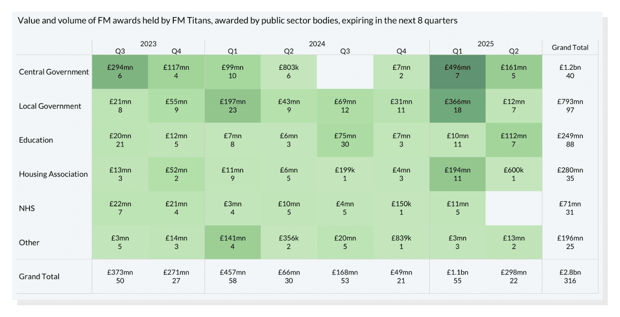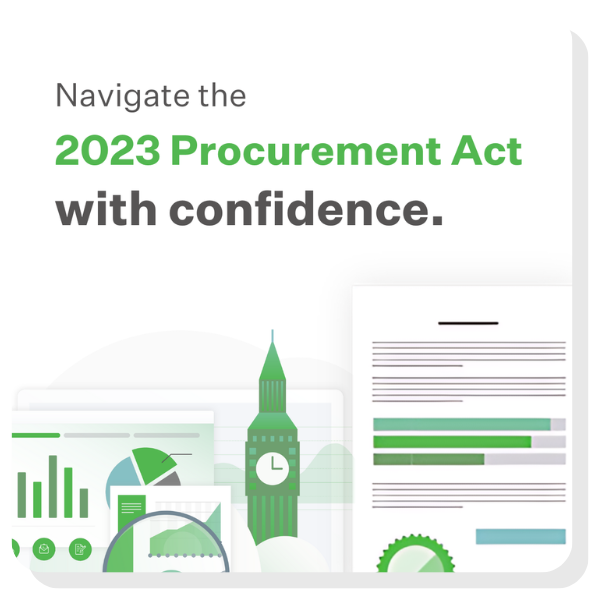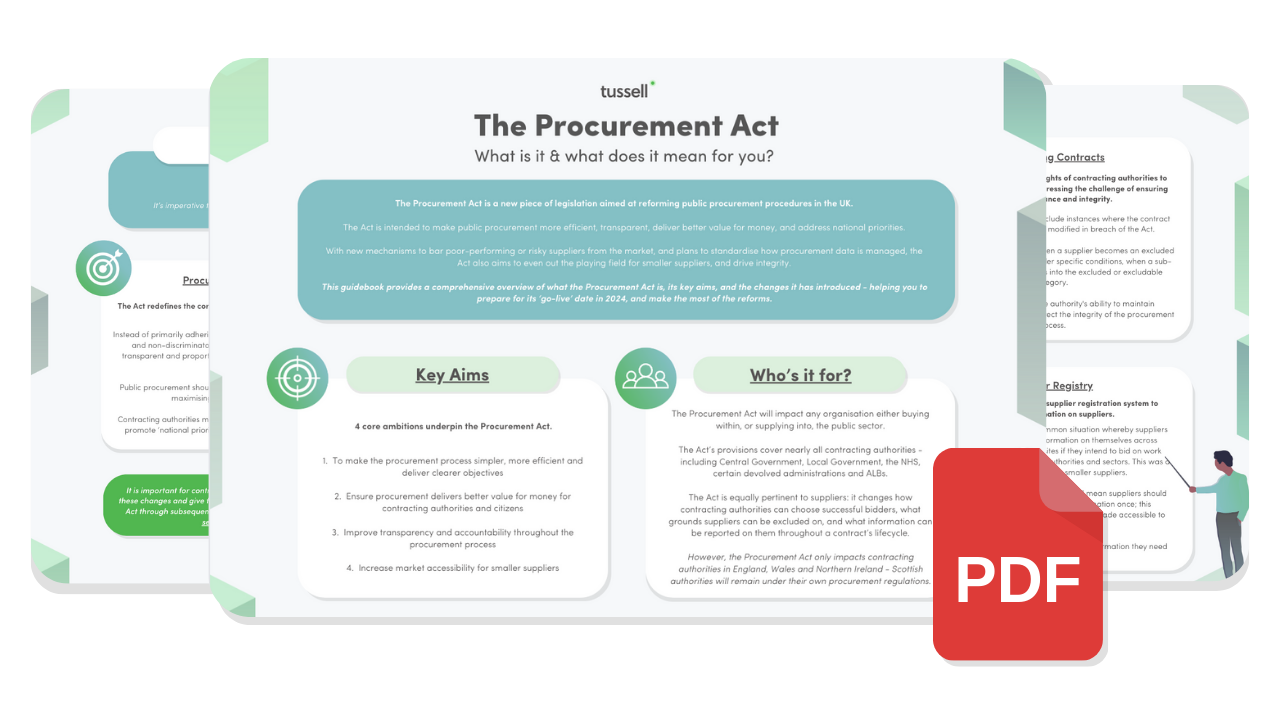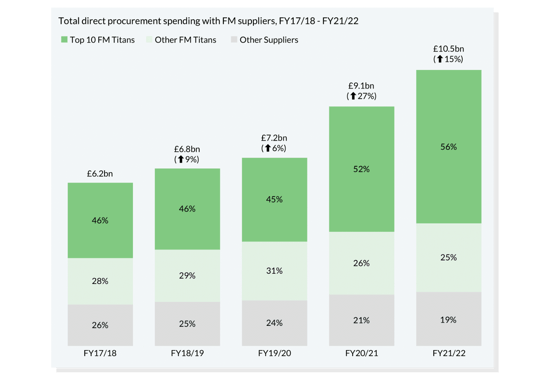Selling to the public sector is a complex and difficult task, let alone selling to one of the most diverse markets within it - the facilities management market.
The public sector facilities management market is bursting with opportunities: between the start of 2016 and the end of 2021, the market had 10.5k contracts awarded with a total value of £32bn and is growing year on year.
If you want to make headway in this market it is fundamental that you understand the lay of the land, key market trends and key documentation that affect this market.
In this blog, we have teamed up with Veolia, to bring you expert insight into the market and some top tips from Matthew Osmond, Director - Sales, Marketing & Business Development.

Veolia’s Facilities Management service manages the risks and responsibilities of keeping your operations safe, compliant and productive. The Group designs and deploys useful, practical solutions for the management of your facility focusing on efficiency, optimisation and compliance. Through its three complementary activities of water, waste and energy, Veolia delivers a model of facilities management focused on decarbonising, depolluting and regenerating resources. In 2022, across the world, the Veolia group provided 111 million inhabitants with drinking water and 97 million with sanitation, produced 44 terawatt hours of energy and recovered 61 million tonnes of waste.
Skip ahead to read about:
First, let's take a look at the hard data on the public sector FM market:
📊 The public sector FM market: what does the data say?
To grow your business in the FM marketplace - or any public sector market - you need to use hard data to understand the lay of the land: who's earning the most? Which buyers are driving growth in your niche? Which framework agreements are being used over others?
So what does the data say about the FM market?
Our report on the FM Titans - which analyses the top 150 Facilities Management suppliers by public sector revenue in FY2021/22 - shows that the public sector FM market is larger than ever.
The FM Titans earned £8.5bn in public sector revenue in FY 2021/22 - representing over 80% of the FM market!
Our analysis also found that:
-
Acquisitions and mergers are rife in the FM space, with companies competing to offer a more total, integrated approach;
-
Local Government represents a huge market for 'hard FM' services, on account of their large housing stock; Central Government and NHS buyers, by contrast, focus their spend on Total FM providers.
-
Only 25% of the volume of contracts won by the Titans in FY21/22 were awarded via a framework
You can read our full analysis of the FM Titans, for free, here.
What does this all mean?
Our analysis shows that the facilities management procurement market, while well-embedded, remains largely accessible to newcomers. Unlike many other public sector markets, this market contains a huge number of high-earning SMEs (31%) with phenomenal growth.
This growth can be achieved in many ways - through niche service offerings, quality relationships within key sectors, or truly integrated approaches.
This data can help you decide which accounts to target, who you're likely going to be facing for new business, and which routes-to-market you should opt for.
🗺️ What is driving the FM market right now?
Our analysis shows that the public sector FM market is growing: but what factors are behind this?
📈 Key market trends:
There are some fundamental key trends that are currently driving the public sector FM market.
Some of these trends can be seen across the wider public sector - such as decarbonisation, resources and waste strategy - but other trends are more unique to just the FM market, such as reporting, that can measure the impact of multiple disciplines/services.
As Matthew said, all activities have an impact on an organisation's environmental footprint and reporting on a multifaceted performance with impacts on biodiversity, climate change and resilience are becoming more important.
Matthew picked out these 6 key trends defining the public FM market at the moment:
-
🌐 Integrated Facilities Management (IFM): Public authorities are increasingly taking an 'intergrated' approach to procuring FM services.
This approach is commonly known as 'IFM'. IFM involves the consolidation of various facility management services under a single provider or management structure in which a single entity or provider is responsible for overseeing and coordinating a range of services that traditionally would have been managed separately.
The key principle behind IFM is to streamline operations, improve coordination, and optimise costs. By consolidating services under 1 provider, buyers can benefit from enhanced efficiency, improved communication, and simplified supplier management. -
🌱 Sustainability & green initiatives: Sustainability has become a top priority for public sector bodies with an increase in focus on energy efficiency, renewable energy integration, waste management and green building practices.
FM providers are expected to adopt and promote environmentally friendly solutions such as energy-efficient systems, recycling programs, and sustainable procurement practices. -
💻 Digital transformation & automation: The digital transformation of public sector FM is gaining momentum. Smart building technologies, Internet of Things (IoT) devices, and data analytics are being used to improve energy management, optimise space utilisation, enhance maintenance practices, and enable predictive analytics.
The integration of building management systems and the use of real-time data are becoming more prevalent. Alongside this, FM providers are leveraging remote monitoring and automation technologies to enhance efficiency and reduce costs. Automation is being used to streamline repetitive tasks, improve operational efficiency, and enhance occupant experience. -
🔢 Data-driven decision-making: With the availability of advanced analytics and data management tools, public sector FM is becoming more data-driven. FM providers are using data analytics to optimise resource allocation, improve space utilisation, predict maintenance needs, and make informed decisions regarding asset management and sustainability initiatives.
-
🔒 Resilience & security: As a result of trends 3 and 4, the need for resilient and secure facilities is ever-increasing. FM suppliers are having to incorporate robust security measures, emergency preparedness plans, and business continuity strategies into their services to address evolving security threats, natural disasters, and unforeseen events.
-
🤝 Outsourcing & partnerships: Public sector organisations are increasingly considering outsourcing or entering into partnerships with FM providers to leverage their expertise, access specialised services, and optimise costs. This trend allows public sector entities to focus on their core functions while relying on FM providers for efficient and cost-effective facility management.
Matthew concluded by saying that these trends reflect the changing landscape of public sector FM and the need for FM suppliers to adapt to new demands and technologies. Staying abreast of these trends enables FM suppliers to meet the evolving needs of public sector organisations and deliver value-added services.
📜 The UK Government's FM Strategy:
Driving these trends is the Government's core piece of FM policy: the FM Strategy
The UK Government's FM Strategy, published in 2018, aims to improve the management of the government estate by reducing costs, improving efficiency, and increasing sustainability.
It includes objectives such as increasing the use of technology, reducing the size of the estate, and implementing a "whole-life costing" approach to asset management. The Strategy also focuses on creating a more diverse and inclusive FM workforce and improving the quality of services provided to users of government buildings.
The FM Strategy hopes to bring some fundamental changes to how FM is delivered and operates within the heart of government. If you're looking to supply FM products or services to the government, it is key that you understand the technicalities of the Strategy and understand what it really means for you.
Have a read of our blog on the Facilities Management Strategy to understand what it's aims are, how it hopes to be implemented, and what it means for you.
✔️ How to be successful in this marketplace...
With these trends in mind, we discussed with Matthew how can you position yourself to be a more successful supplier in this market.
Top tips:
-
💡 Understand your routes to market: First, Matthew commented that a fundamental question you should ask yourself from the start is whether bidding on a tender is the right thing to do, or whether other routes to market might be more fruitful.
He added that utilising frameworks can be beneficial for contracting authorities, as they can make call-offs without the need for a full procurement process each time, as the terms and conditions have already been set. Therefore buyers often use frameworks to procure without looking elsewhere. As a result, if you are a supplier you need to be on the right frameworks in order to have a chance at winning more contracts.
Our FM Titans report shows that the top 150 suppliers in the FM market won 75% of their contract awards outside of frameworks. The top framework used by the FM Titans was RM3830 which had 17 call-offs shared between 8 suppliers in FY21/22. These contracts were mainly for high-value Covid-19 deals. This demonstrates the importance of being on the right framework.
-
📈 Position your brand: "It can feel that there are as many meanings and definitions of what facilities management actually is as there are contracts out there", says Matthew, "but knowing what you do best and what you can deliver has an amplification effect. Veolia’s origins reach back over 150 years to the first contract to provide clean drinking water for the populous of Lyon in France."
You must find a balance in providing a simple solution for a complex problem whilst balancing the needs of human progress with the necessity to protect the environment. -
🏆 Be customer focused: Somewhere in your ‘purpose or mission statement’ is a phrase including the words 'customer' and 'focus'. Matthew said "you have to ask yourself if you are really customer-centric? Being truly customer-centric as a supplier is more than just words on a wall chart, it’s at the core of everything you do and at the heart of every decision."
Matthew suggested that in order to find the answer, you need to reach out to your employees and customers - the Mortn test and Net Promoter Score are a great way to do this.
Veolia is a great case study for this, as they have an annual ‘Voice of Resourcers’ survey that is used alongside their ‘Customer Satisfaction Scores’ to help them maintain focus on what our customers need with actions set at the highest level in the organisation to address areas of concern.
🔎 Looking to the future
Being a successful supplier - not just in the FM market, but any vertical - means looking ahead.
Not just ahead at what contracts or frameworks are due to expire soon, but what underlying trends may come to define your market and customer's needs over the years to come.
📊 Upcoming Opportunities:
Our FM Titans report shows that there are £2.8bn worth of live FM contracts come up for renewal in the next 24 months.

This shows that there has been no better time to break into this market and capitalise on these upcoming opportunities.
To learn how Tussell can help you get ahead of opportunities in the public sector, book in a chat with our team.
🔮 Trends to look out for:
Some of the current trends we raised before - such as the impact of sustainability and digital transformation - look set to remain prevalent trends within this market for some time to come.
However, there is the potential for the emergence of several new factors that could affect the public sector FM market in the future. Here are some key things for suppliers to consider and potentially prepare for:
-
🤖 Technological advancements: Advancements in technology, such as LoT, artificial intelligence (AI), and automation, will significantly impact the public sector FM market. These technologies can enhance efficiency, optimise resource allocation, and improve maintenance and monitoring processes. If used correctly, these resources could significantly benefit an FM supplier's ability to do business with government.
-
☕ Changing workforce dynamics: The workforce landscape is evolving, with shifts in demographics and work preferences, particularly following the outbreak of COVID-19. FM providers will need to adapt to the changing needs and expectations of the workforce, such as flexible work arrangements, workspace design, and employee well-being initiatives.
-
💷 Budget constraints & cost optimisation: Public sector organisations often face budget constraints, requiring them to optimise costs while still maintaining efficient FM services. FM providers will need to offer cost-effective solutions & innovative financing models, whilst demonstrating the value they bring in terms of productivity, operational efficiency, and asset management.
-
📃 Regulatory compliance & standards: The public sector is subject to various regulations and standards related to safety, accessibility, energy efficiency, and data security. FM providers must stay updated with these regulations and ensure compliance in their operations, including the management of facilities, maintenance practices, and data privacy. We can already see that changes will impact this sector through the new Procurement Bill and the government's National Cyber Strategy will change how suppliers treat cyber threats and build resilience in this area.
-
🚀 Changing service delivery models: The public sector is increasingly exploring alternative service delivery models, such as outsourcing, public-private partnerships, and shared services. FM providers should be prepared to adapt to these changing models and demonstrate their ability to deliver value and quality services in such arrangements.
It is essential for FM providers to monitor and respond to these trends and government updates to remain competitive and meet the evolving needs of public sector buyers.
Concluding remarks:
Do not underestimate the speed at which the public sector FM market is moving - it is rapidly growing, and technological advances look set to shake up this market. Our FM Titans report shows that there is £2.8bn worth of live FM contracts coming up for renewal in the next 24 months.
It is crucial that you heed the advice of our expert, Matthew, and really think about the impact you are having on your customers. Understanding your customer needs and your branding is fundamental to your success in the market. If you can nail this and hone in on your best routes to market, you will make strong progress as an FM supplier.
Getting your head around the opportunities available to you and how government legislation and documentation will affect the 'FM world' is a key pathway to success in this market. To find out more about this, head to the Tussell website to read our summary blogs and how-to guides on this topic.
.png?width=250&height=250&name=Veolia%20(3).png)
Matthew Osmond has over 20 years experience of delivering sustainable and efficient growth in the Resource Management sector. Developing and maintaining quality relations with customers and prospects to ensure reputation and achievements are represented to maximum effect. Matt's expertise has been hined through work with many of the larger UK organisations in both the Public and Private sector.
*
Taking a proactive, data-led approach is key when tackling the public sector. By getting ahead of opportunities, using data to understand your target accounts, and making your presence known, you'll be on the right path to more business in this market.
We have lots more resources to help you sell more to government - check out some of our other how-to guides:
🟢 How to build a pipeline of public sector procurement opportunities
🟢 Procurement Frameworks: How to find the best ones for you



















